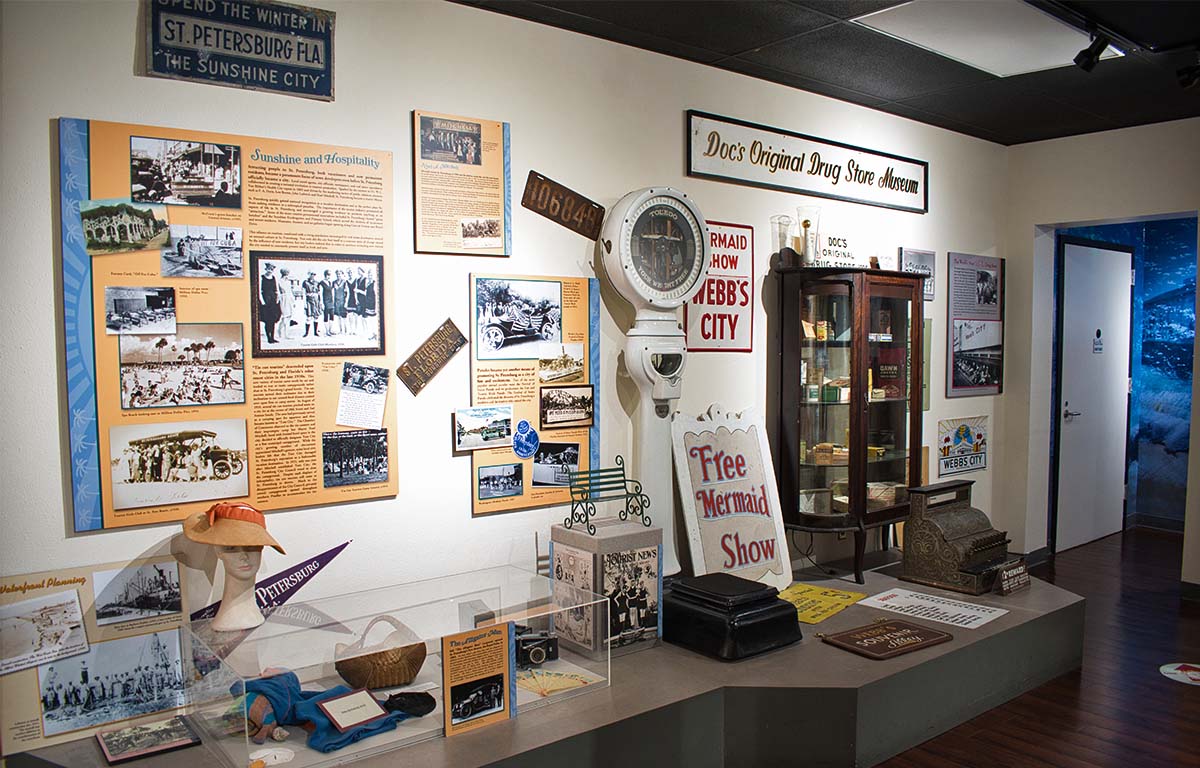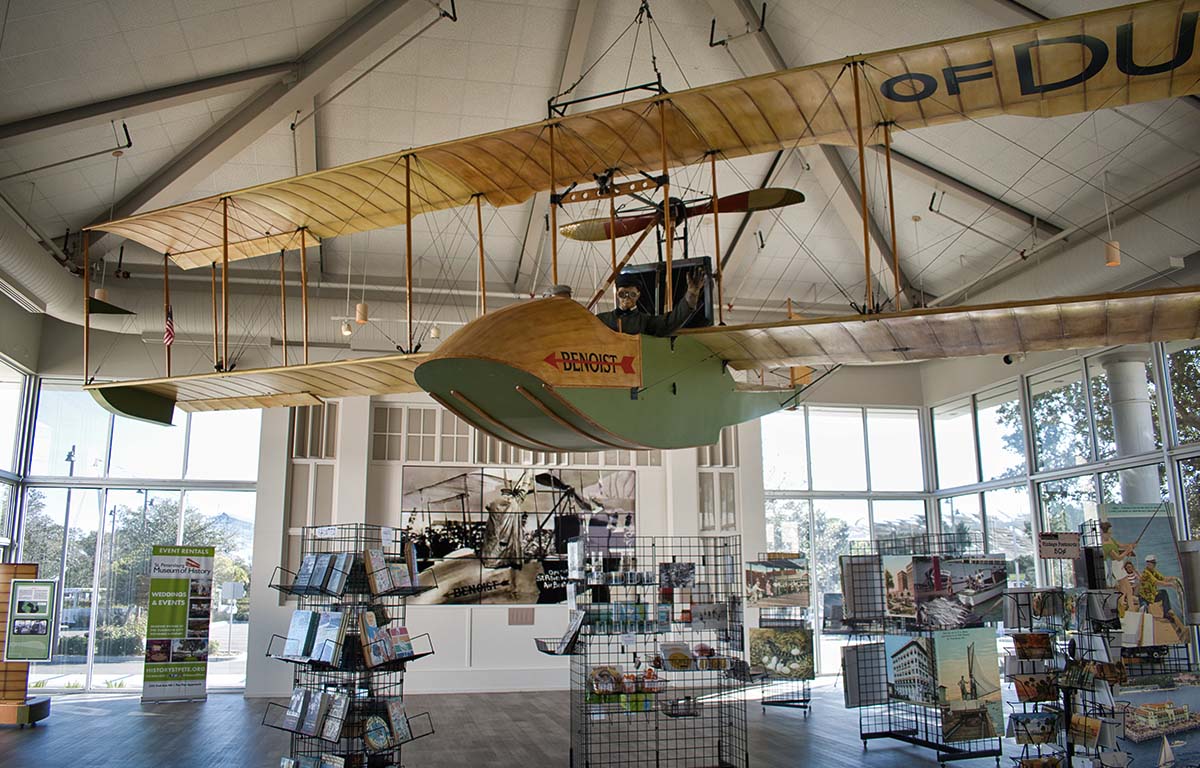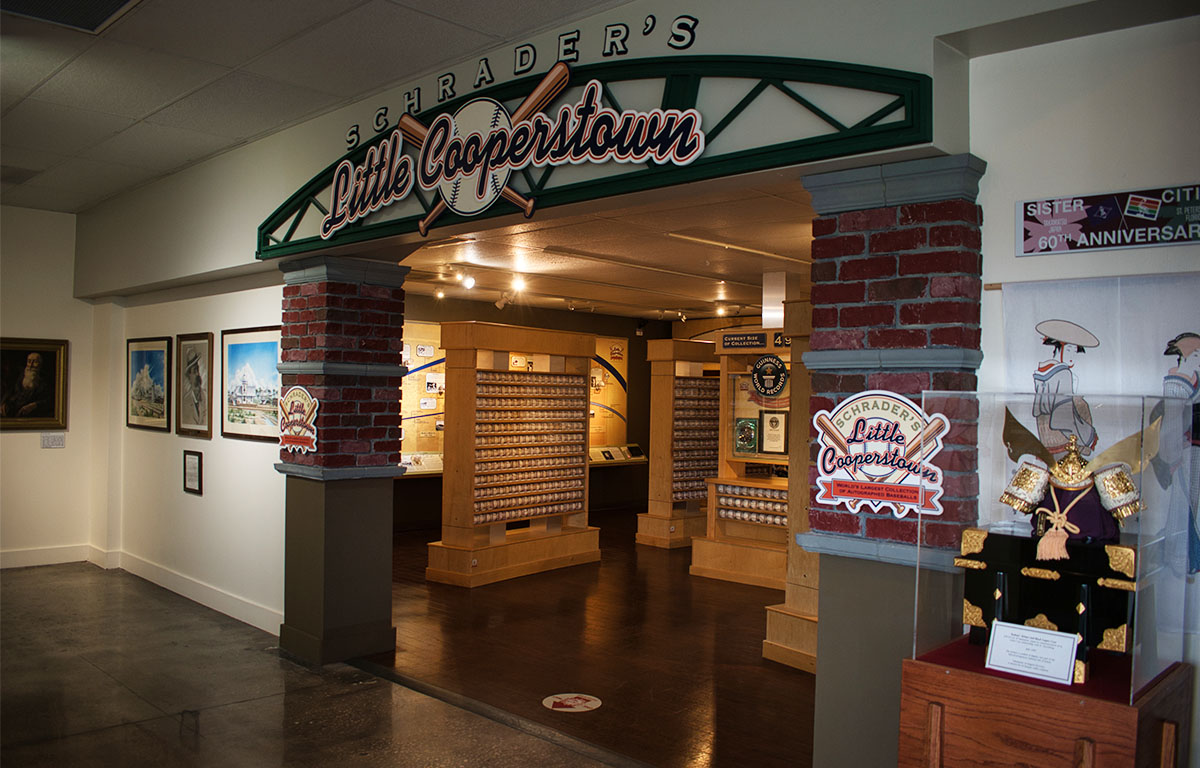Explore the Rich Past of the Sunshine City at the St. Petersburg Museum of History
The City of St. Petersburg has always had a penchant for piers. In the early 1900s, it had three competing piers within a few blocks of each other: the 3,000-foot Railroad Pier (opened 1889), the 1,500-foot Brantley Pier (1896), and the 2,000-foot Fountain of Youth Pier (1901).
These days, there’s only one: St. Pete Pier™, which opened in 2020.

In 1898, Teddy Roosevelt captured a giant devil ray in the waters off St. Pete. He would become President of the United States three years later.
Those are just a couple tidbits of information that you can discover at the St. Petersburg Museum of History (SPMoH), which is located at the north side of the entrance to the Pier. The large, well-lit space brims with exhibits, historical photos, documents, maps and artifacts, among them pajamas worn by President William Howard Taft that you could make a pup tent out of.
The museum tells the fascinating story of a town that incorporated in 1892 with a population of 300 and has grown to a bustling city of 264,000 — one that is now famous for its thriving arts scene, its over-achieving baseball team the Tampa Bay Rays, its warmth, sunshine and terrific quality of life.
Starting in 1967, St. Petersburg had 768 consecutive days of sun in the sky, which served to entrench its nickname, the Sunshine City.
SPMoH is celebrating its centennial this year. The museum’s origins date to 1920, when Mary Wheeler Eaton formed the St. Petersburg Memorial Historical Society. The following year, the city granted the organization a parcel of land after a major hurricane destroyed the aquarium that stood on it. The museum opened on Feb. 11, 1922 and has remained in the same location ever since.
As early as 1910, the St. Petersburg Evening Independent newspaper (which folded in 1986) gave away every copy of the paper free of charge if the sun didn’t shine that day. The promotion lasted for decades.

SPMoH has exhibits celebrating St. Petersburg’s status as the birthplace of commercial aviation (Flight One Gallery) and its fondness for piers (Piers Through the Years). One room, The Odditorium, showcases a collection of strange artifacts that made their way to the Sunshine City over the years. The star attraction is a — 3,000-year-old Egyptian mummy.
“Our Lady of the Nile” has been in town since 1922, when a ship carrying carnival equipment reached Tampa Bay and the captain realized he did not have enough money to pay the port fees. He offered as payment the mummy and its carved wooden sarcophagus. Our Lady was authenticated in the early 1970s. She’s believed to have been in her early 30s.

Baseball fans won’t want to pass up Little Cooperstown, which occupies its own room in SPMoH. The exhibit celebrates St. Pete as a long-time fixture of Major League Baseball spring training (and as home of the Rays, formerly Devil Rays, since 1998). Little Cooperstown is stuffed with artifacts and memorabilia, homages to the likes of Babe Ruth, Joe DiMaggio, Ty Cobb and others, and includes some 5,000 autographed baseballs in glass-covered cases.
In 1952, the largest crowds ever recorded for spring training games at St. Pete’s Al Lang Field featured Brooklyn Dodgers second baseman Jackie Robinson. The seven games he played drew an average attendance of 7,433.
There’s a whole lot more where that came from. So stop in and pick up some knowledge — and enjoy the air-conditioning if you’re visiting the Pier during summer. You can get a good primer on St. Pete in an hour or so, or you can delve deeply and stay a whole lot longer than that.
During St. Petersburg’s first few decades, its denizens wore impossibly heavy, dark clothing. And that was way before air-conditioning. The proof is in the museum’s photos. It’s a wonder that a good portion of the townsfolk didn’t faint in the street on a regular basis.
How things have changed. Feel free to saunter through the museum in shorts, T-shirt and flip-flops.
